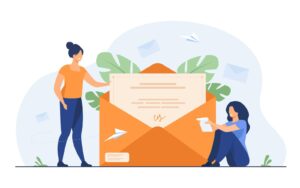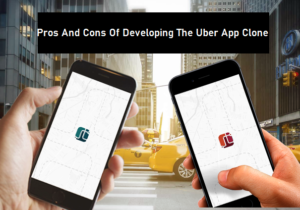How To Increase Blog Traffic: 10 Easy Steps to Follow
With systems like WordPress, starting a blog has never been easier. However, once it’s up and running, your next major hurdle will be increasing visitors to your blog or website. We have some easy ways how to increase blog traffic in this blog.
Don’t worry, you don’t need to be an expert marketer to promote your site. Using some tried and true best practices, you may quickly enhance your blog traffic and attract more visitors.
In this article, we’ll go over some of the simplest and tried-and-true ways to boost your blog traffic like a pro marketer.
We will only give strategies that we have personally utilized to boost our website traffic to millions of visits every month, unlike other posts on increasing blog traffic.
We’ve also worked hard to create the most thorough website traffic guide possible, so you can develop a comprehensive blog traffic strategy for your company.
Ready? let’s get started.
Tips on How to Increase your Blog Traffic
1. Create Audience Profiles to Understand Your Users
It’s important to spend some time getting to know your target audience and what they’re looking for before you start writing blog posts.
Answering the following questions can help you rapidly create an audience framework:
- Who is your target audience?
- What problems are they facing that you can help solve?
- What kind of content are they looking for?
- How would they strive to discover the answers to their questions in the perfect world?
Answering these questions will assist you in gaining a better understanding of your target market.
You may go even further by adding more custom queries like:
- How old are they?
- What are their occupations?
- What is their education level?
- What is their degree of competence in the topic of your blog?
In the eCommerce business, these audience profiles are referred to as buyer personas. If you manage an online business, we strongly advise you to read this comprehensive tutorial on how to construct a buyer persona, complete with examples and a template. Here we have started the steps on how to increase blog traffic.
2. Conduct keyword research in order to develop a content strategy.
Content creators and SEO specialists utilize keyword research as a tool. It helps in the discovery of certain terms and phrases that users put into Google and other search engines in order to locate the content they want.
When it comes to developing content, most newcomers depend on their best guesses. As you can expect, this method is hit-or-miss.
If you utilize the “best-guess” technique, your articles have a good possibility of not ranking well in search engines.
Because no one is searching for the keywords you used, or because there is just too much competition for those keywords.
The following advantages may be obtained by conducting good keyword research:
- Find out what people are looking for in terms of search phrases.
- For prominent search phrases, come up with original content ideas.
- Learn from your competition and create better content to outperform them.
- Create a series of pillar-articles to drive steady traffic to your blog.
The question now is: how do you do keyword research? Fortunately, it is not as tough as you would believe.
There are several free and paid keyword research tools able to help you.
To find out additional keyword suggestions, simply type in a keyword, a competitor’s blog/website URL, or your own URL. Focus on the important points on how to increase blog traffic.
3. Make an Editorial Calendar
You’ll almost probably come up with a swarm of blog article ideas when you’ve finished your keyword research.
The enormous number of keywords can often overwhelm newcomers to the point that they lose up.
We propose developing an editorial calendar to avoid this from happening to you (a game plan). Keep in mind that no significant blog was created overnight.
A successful blog requires time and regular work to build.
Creating an editorial schedule can assist you in developing and sticking to your strategy.
There are other handy programs available, such as Asana and Trello, to mention a few.
These tools provide a strong range of capabilities that will help you in staying on top of your game.
The idea is to get organized, get a bird’ eye view of your plan, and increase your productivity.
Here are some more suggestions for improving the efficiency of your editorial operation.
- Don’t put too much pressure on yourself. Begin by writing two articles each week and progressively expand your output as you are able.
- Maintain a regular posting schedule. Make sure you stick to your schedule and post information on a regular basis.
- To your calendar, add notes, keyword ideas, and outlines. When you sit down to write, this will assist you in producing higher-quality material.
- To make your calendar software more attractive and organized, use colors, tags, categories, and other features.
4. Create Comprehensive and Useful Content
The most important criterion that consumers and search engines examine is high-quality content.
A detailed post on a certain topic that contains all the specifics is typically a superb piece of material for a blog. As a result, it is incredibly beneficial to users.
“Pillar articles” are lengthy articles that cover a wide range of topics. They may be referred to as flagship content or cornerstone pieces by other specialists.
These are, in a nutshell, your most significant articles. Select the most promising term and include as much information as possible in a single long-form piece.
To cover all of the major keywords in your business, you should write as many pillar articles as feasible.
The following are some points to remember when writing pillar content:
- Any form of the article might be used as pillar content. A how-to guide, instructional, comparative article, opinion piece, listicle, and so on are some examples.
- The distinction between pillar content and other articles is that pillar content is more thorough and contains more in-depth information on the subject.
- Your pillar articles aren’t subject to the passage of time. They never go out of style and are constantly helpful. We do urge, however, that you keep your search results updated with fresh information to stay on top of them.
5. Make Your Content Readable
As previously said, both search engines and people prefer longer and more thorough articles that contain all of the information they require.
The issue now is that humans have a limited attention span.
Your users will be turned off by a minor problem in reading or understanding, and they will leave without looking at all of the helpful information you provided.
To prevent this problem from occurring, make all of your information easy to read.
Presenting your post in bite-size words with a welcoming tone and plenty of pictures is a fantastic place to start.
Here are some basic guidelines for making your material more readable and user-friendly.
- Make your sentences and paragraphs shorter. This creates a lot of white space around the text, which makes it easier to read.
- To enhance typography, use more readable fonts, a bigger font size, and enough line space.
- Check your content’s readability score. There is a built-in tool for this in Yoast SEO, and there are also a slew of additional online readability checks.
- Use a grammar checker to ensure your work is error-free. We recommend Grammarly since it not only checks your grammar but also helps you improve your writing skills.
Use visual components like photos, screenshots, videos, infographics, and other visuals. These media features add interest to your post and make it simpler to read. We have almost covered half of the steps on how to increase blog traffic.
7. Learn to Write Great Headlines
The first thing readers see when they come across your material in search results or RSS feeds is the title of your piece.
A clever blog article title attracts more attention and clicks. A bland and uninteresting headline, on the other hand, is likely to be disregarded and scrolled through.
As a result, headlines are quite crucial.
You must learn how to develop better titles for your blog articles in order to attract the attention of readers and increase the number of clicks.
Fortunately, blogging gurus have been studying headlines for a long time and can share their results with you.
These are the fundamental components of a good headline:
- It offers users a reward and value
- An emotional response is elicited by a good headline (joy, surprise, shock, curiosity, fear, excitement, greed, and so on).
- It promotes the content by including target keywords.
Power words are used by copywriters to elicit emotional responses. They explain why the content is worthwhile and what visitors will gain by clicking on the headline.
Finally, a good headline provides a subtle and occasionally implicit call to action for users.
8. Add Videos to Your Articles
On the internet, videos are the most popular type of material. Users spend more time on blog articles that include videos than on those that only feature text and photographs.
A video uploaded on your WordPress hosting server will consume too many resources, resulting in a poor user experience.
Uploading movies and videos to YouTube and then embedding them in your blog entries is the easiest approach to incorporate them into your WordPress site.
Adding videos to your articles in WordPress is super easy. However, you should never upload videos to WordPress because it is not optimized to stream videos.
Because YouTube is the world’s second-largest search engine and a prominent social media network, you’ll get even more exposure.
You may quickly generate video content for your website in a variety of ways. Here are a few to get you started:
- You may make how-to tutorial slideshows with voice-over instructions.
- You can make screencasts if you want to.
- Record interviews with other industry bloggers and influencers.
- Become a vlogger by uploading your own selfie videos.
If you’re using a Mac for video editing, iMovie is fully capable of conducting simple video edits. For simple editing, Windows users can utilize free video editing tools such as Lightworks or Shotcut.
9. Add Images, Charts, and Infographics to Create Visually Attractive Content
We said in step 5 that including photos and charts in your posts makes them more readable.
We feel that because visual elements are so vital, they deserved to be on their own list.
Our brain likes visual components as human beings. Colors and things appeal to us because they elicit emotional responses in our brains. We become more involved and absorbed in our environment as a result of this.
Infographics are popular because they make information interesting and simple to understand.
Images in blog articles draw readers’ attention and assist them to focus on both the visual element and the content surrounding it.
If you’re just getting started, it’s crucial to understand that you can’t just utilize any image you find online. Copyright protects images, and stealing copyrighted information can result in harsh repercussions.
You should use your own pictures, graphics, and photographs wherever possible, but not every blogger is a graphic designer or photographer.
10. Start Generating More Backlinks
A backlink is a link that refers to your content from another website. Google considers backlinks to be one of the most essential ranking criteria.
Backlinks from reliable websites and blogs are extremely tough to come by. It’s not only a problem for newbies; even seasoned bloggers have trouble with it.
Here are some suggestions for obtaining high-quality backlinks for your website:
- Contact industry influencers and prominent bloggers, and let them know about specific material on your site to which they might wish to connect.
- Post on other people’s blogs and web pages as a guest blogger.
- On your blog, do interviews with bloggers and influencers. They’ll most likely want to tell their users about your interview, and you’ll obtain a backlink as a result.
- Adding a link to your website to all of your social media networks is the simplest technique to earn a backlink.
We learned all the steps on how to increase blog traffic.
Conclusion
You now understand how to boost blog traffic in 2021. Long-term advantages come from SEO, whereas short-term wins come from social media, which gives you more rapid traffic and an audience to help you in the long run. These two crucial methods are simple enough to learn in an afternoon yet strong enough to make a difference in your company. I hope you understood how to increase blog traffic.
Please share this post if you find it useful so that we may reach as many people as possible.








I’m curious to find out what blog platform you are working
with? I’m experiencing some small security issues with my
latest blog and I’d like to find something more secure.
Do you have any solutions?
My page – Seo Services